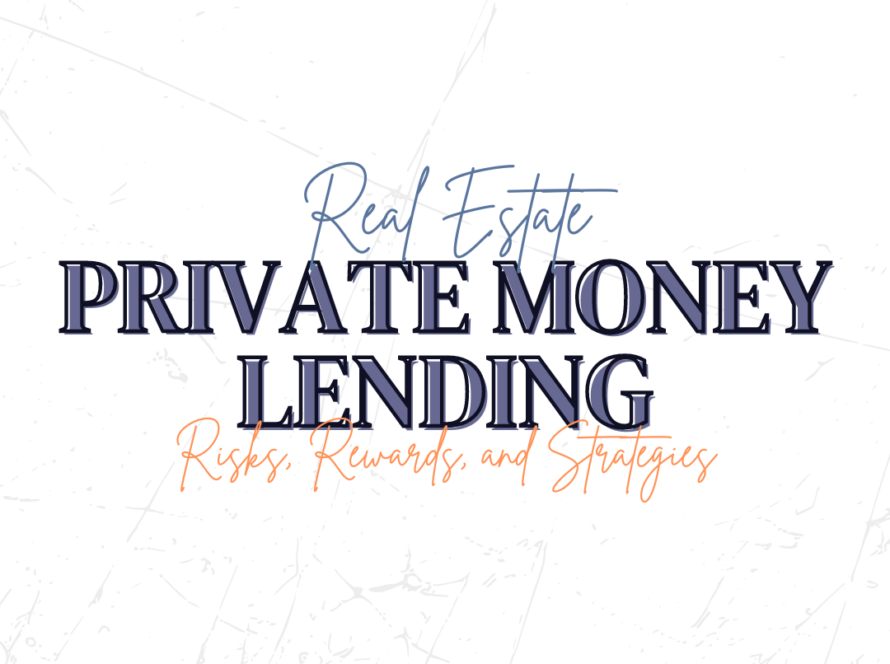As a private lender, one of the biggest decisions you’ll make is choosing what types of deals to fund. Most real estate borrowers fall into two camps: fix-and-flippers or buy-and-hold investors (rentals). Both offer the potential for solid returns—but they come with different timelines, risk profiles, and cash flow structures.
The real question is: Which is right for your goals—fix-and-flips or rentals?
In this guide, we’ll break down the pros and cons of each, show you how to structure your deals based on the strategy, and help you decide where to place your capital for maximum return and minimum stress.
How to Structure Private Lending Deals for Maximum Profit and Security
Understanding the Two Investment Types
Fix-and-Flip Deals
Fix-and-flip investors buy distressed or undervalued properties, renovate them, and aim to sell within a few months.
Typical Lending Structure:
- Loan term: 6–12 months
- Interest: Often higher (10–15%)
- Payment: Interest-only monthly, with principal repaid at sale
Rental Property Deals
Buy-and-hold investors purchase properties to generate income over time through rent.
Typical Lending Structure:
- Loan term: 12–36+ months
- Interest: Often lower (6–10%)
- Payment: Interest or amortized monthly payments
Pros and Cons of Lending on Fix-and-Flip Deals
Pros
- Faster returns: Most loans mature within a year or less.
- Higher interest rates: Since these are short-term, interest tends to be 10–15%.
- Quick reinvestment: You get your capital back faster to deploy into more deals.
Cons
- Higher risk: Success depends on fast project execution and strong resale demand.
- Market-sensitive: Flippers rely on timing—if the market shifts, your exit gets riskier.
- More hands-on tracking: These projects often require more frequent updates from the borrower.
Pros and Cons of Lending on Rental Property Deals
Pros
- Stability: Rental markets are generally less volatile than resale markets.
- Predictable income: Monthly interest payments are often backed by rental cash flow.
- Lower default risk: Strong rentals can cover debt service even during economic shifts.
Cons
- Tied-up capital: Your money may be in the deal for 2–3+ years.
- Lower interest rates: Typically 6–10%, depending on borrower strength.
- Slower scale: It takes longer to roll your money over into new opportunities.
How to Structure Each Loan for Safety and Profit
Fix-and-Flip Loan Structure Example
- Loan Amount: $100,000
- ARV: $150,000 → LTV: 66%
- Term: 9 months
- Interest Rate: 12% (interest-only)
- Exit Strategy: Sale of property after renovation
Why it works: High interest, short timeline, and safe LTV make it ideal for fast returns—assuming the borrower executes.
Rental Loan Structure Example
- Loan Amount: $120,000
- Market Value: $180,000 → LTV: 66%
- Term: 24 months
- Interest Rate: 8% (monthly payments)
- Exit Strategy: Refinance after stabilization or cash flow-based repayment
Why it works: Steady monthly payments backed by rental income ensure consistent cash flow with strong collateral.
What Type of Deal Matches Your Lending Goals?
Ask yourself:
Are you looking for…
- Quick liquidity and higher yield? → Fix-and-flip
- Stable monthly income and long-term plays? → Rentals
Do you prefer…
- Shorter commitment and faster turnover? → Fix-and-flip
- Fewer deals, more passive management? → Rentals
Are you comfortable with…
- Monitoring active construction projects and tighter timelines? → Fix-and-flip
- Longer repayment terms with less volatility? → Rentals
Balancing Your Portfolio with Both
The best private lenders often do both. You don’t have to choose one exclusively—many lenders build hybrid portfolios.
Example Hybrid Strategy:
- 60% of your capital in rentals for steady monthly income
- 40% in flips for faster yield and capital recycling
This approach gives you consistent cash flow while still allowing for short-term profits and reinvestment.
How The MicroBanking Method Helps You Navigate Both
Not sure which deals to pursue? The MicroBanking Method gives you:
- Frameworks for evaluating fix-and-flip and rental deals side-by-side
- Deal analysis tools to compare LTV, risk, timelines, and returns
- Guidance on structuring safe loan terms for any strategy
- Access to both short-term and long-term borrower networks
It’s not just about finding a deal—it’s about finding the right deal for your goals.
Conclusion – Should You Lend on Fix-and-Flips or Rentals?
There’s no one-size-fits-all answer when it comes to lending on fix-and-flips vs. rentals. Each has its strengths, risks, and role in your overall lending strategy.
Fix-and-flips offer speed and higher returns—perfect for lenders looking to move capital quickly. Rentals provide stability and consistent income—ideal for those who want long-term passive cash flow.
The smartest move? Learn how to evaluate both, and use strategic structuring to protect your capital and increase your profit, no matter the project.
Want expert support and proven systems to make smarter lending decisions? Visit The MicroBanking Method to master both sides of the game and grow your lending business with confidence.




